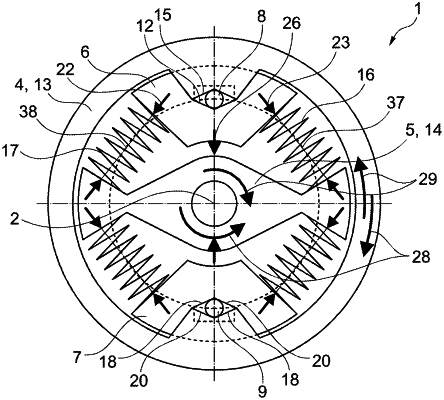| CPC F16F 15/1205 (2013.01) [F16F 15/1216 (2013.01)] | 7 Claims |

|
1. A torsional vibration damper having a rotational axis for a powertrain of a motor vehicle, comprising:
an input side for receiving a torque;
an output side for dispensing the torque;
an intermediate element arranged for torque transmission between the input side and the output side;
a first energy storage element and a second energy storage element, the first energy storage element and the second energy storage element supporting the intermediate element such that the intermediate element can vibrate relative to the input side and the output side; and
a first roll body, wherein:
the intermediate element comprises a transmission path for the first roll body;
a one of the input side or the output side comprises a counter path;
the first roll body is guided in a rotatable manner between the transmission path and the counter path;
the first energy storage element and the second energy storage element connects the other one of the input side or the output side to the intermediate element for torque transmission;
the first energy storage element exerts a first force and a first direction of force on the intermediate element;
the second energy storage element exerts a second force and a second direction of force on the intermediate element; and
the first force and the second force differ from each other in a rest position; or
the first direction of force and the second direction of force differ from each other in a rest position.
|